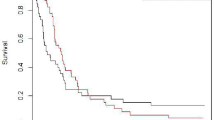Abstract
We discuss the impact of misspecifying fully parametric proportional hazards and accelerated life models. For the uncensored case, misspecified accelerated life models give asymptotically unbiased estimates of covariate effect, but the shape and scale parameters depend on the misspecification. The covariate, shape and scale parameters differ in the censored case. Parametric proportional hazards models do not have a sound justification for general use: estimates from misspecified models can be very biased, and misleading results for the shape of the hazard function can arise. Misspecified survival functions are more biased at the extremes than the centre. Asymptotic and first order results are compared. If a model is misspecified, the size of Wald tests will be underestimated. Use of the sandwich estimator of standard error gives tests of the correct size, but misspecification leads to a loss of power. Accelerated life models are more robust to misspecification because of their log-linear form. In preliminary data analysis, practitioners should investigate proportional hazards and accelerated life models; software is readily available for several such models.
Similar content being viewed by others
References
P. K. Andersen, “Survival analysis 1982–1991: The second decade of the proportional hazards regression model,” Statistics in Medicine vol. 10 pp. 1931–1941, 1991.
G. L. Anderson and T. R. Fleming, “Model misspecification in proportional hazards regression,” Biometrika vol. 82 pp. 527–541, 1995.
G. R. Brillinger, “A generalized linear model with “Gaussian” regressor variables,” in A Festschrift for Erich L. Lehmann, (P. J. Bickel, K. Doksum, and J. L. Hodges Jr., eds.) Wadsworth: San Francisco, pp. 97–114, 1983.
D. Collett, Modelling Survival Data in Medical Research, Chapman and Hall: London, 1994.
D. R. Cox, “Regression models and life-tables (with discussion),” Journal Royal Statistical Society Series B vol. 34 pp. 187–220, 1972.
D. R. Cox, “Tests of separate families of hypotheses,” Proceedings of 4th Berkeley Symposium vol. 1 pp. 105–123, 1961.
R. B. Davies, R. Hales, J. C. Harman, and S. R. Holdsworth, “Statistical modeling of creep rupture data,” Journal of Engineering Materials & Technology vol. 121 pp. 1–8, 1999.
I. Ford, J. Norrie, and S. Ahmadi, “Model inconsistency illustrated by the Cox proportional hazards model,” Statistics in Medicine vol. 14 pp. 735–746, 1995.
A. Gould and J. F. Lawless, “Consistency and efficiency of regression coefficient estimates in location-scale models,” Biometrika vol. 75 pp. 535–540, 1988.
P. Gustafson, “On measuring sensitivity to parametric model misspecification,” Journal Royal Statistical Society Series B vol. 63 pp. 81–94, 2001.
J. L. Hutton and P. J. Solomon, “Parameter orthogonality in mixed regression models for survival data,” Journal Royal Statistical Society Series B vol. 59 pp. 125–136, 1997.
N. Keiding, P. K. Andersen, and J. P. Klein, “The role of frailty models and accelerated failure time models in describing heterogeneity due to omitted covariates,” Statistics in Medicine vol. 16 pp. 215–224, 1997.
J. T. Kent, “Robust properties of likelihood ratio tests,” Biometrika vol. 69 pp. 19–27, 1982.
S. Kullback and R. A. Leibler, “On information and sufficiency,” Annals of Mathematical Statistics vol. 22 pp. 79–86, 1951.
G. Kwong and J. L. Hutton, “Choice of parametric models in survival analysis: applications to cerebral palsy and monotherapy for epilepsy,” Applied Statistics, 2002, in press.
K.-C. Li and N. Duan, “Regression analysis under link violation,” Annals Statistics vol. 17 pp. 1009–1052, 1989.
Y. H. Li, J. P. Klein, and M. L. Moeschberger, “Effects of model misspecification in estimating covariate effects in survival analysis for small sample sizes,” Computational Statistics and Data Analysis vol. 22 pp. 177–192, 1996.
P. F. Monaghan, Model Misspecification in Survival Analysis: Applications to Cancer Research, Ph.D. thesis, University of Liverpool, 1998.
R. L. Prentice, “Discrimination among some parametric models,” Biometrika vol. 62 pp. 607–614, 1975.
Y. Sahamotoa, M. Ishiguro, and G. Kitagawa, Akaike Information Criterion Statistics, KFT Scientific; Tokyo, 1986.
C. Schmoor and M. Schumacher, “Effects of covariate omission and categorization when analysing randomized trials with the Cox model,” Statistics in Medicine vol. 16 pp. 225–237, 1997.
P. J. Solomon, “Effect of misspecification of regression models in the analysis of survival data,” Biometrika vol. 71 pp. 291–298, 1984. Amendment vol. 73 pp. 245, 1986.
C. A. Struthers and J. D. Kalbfleisch, “Misspecified proportional hazards models,” Biometrika vol. 73 pp. 363–369, 1986.
H. White, “Maximum likelihood estimation of misspecified models,” Econometrica vol. 50 pp. 1–25, 1982.
Author information
Authors and Affiliations
Rights and permissions
About this article
Cite this article
Hutton, J.L., Monaghan, P.F. Choice of Parametric Accelerated Life and Proportional Hazards Models for Survival Data: Asymptotic Results. Lifetime Data Anal 8, 375–393 (2002). https://doi.org/10.1023/A:1020570922072
Issue Date:
DOI: https://doi.org/10.1023/A:1020570922072




